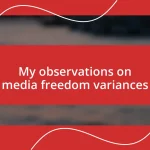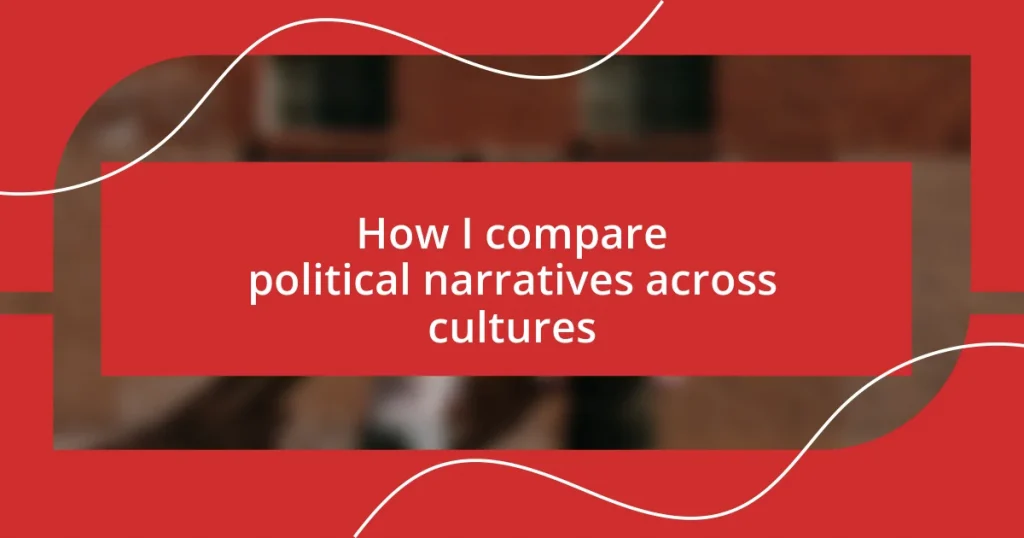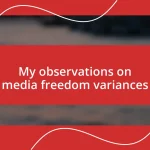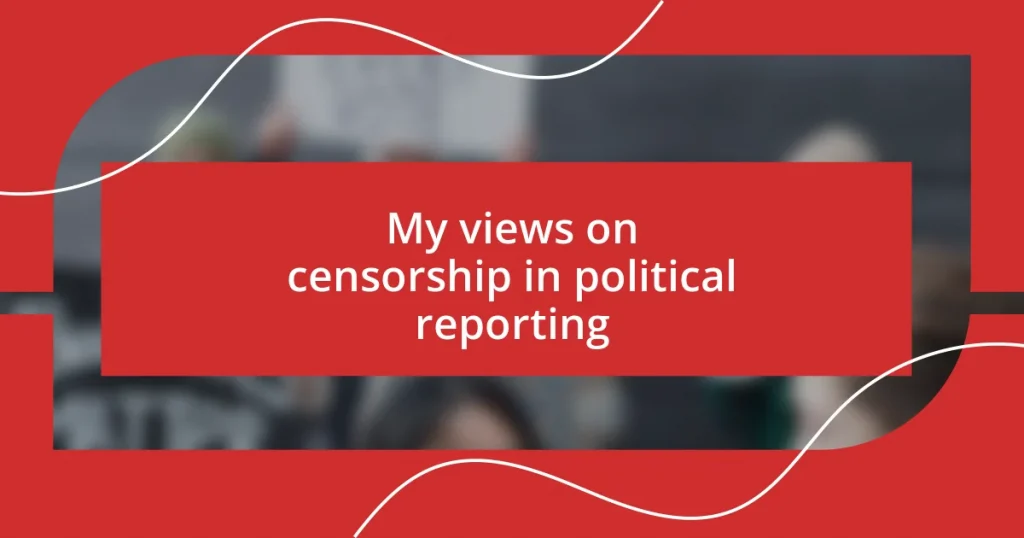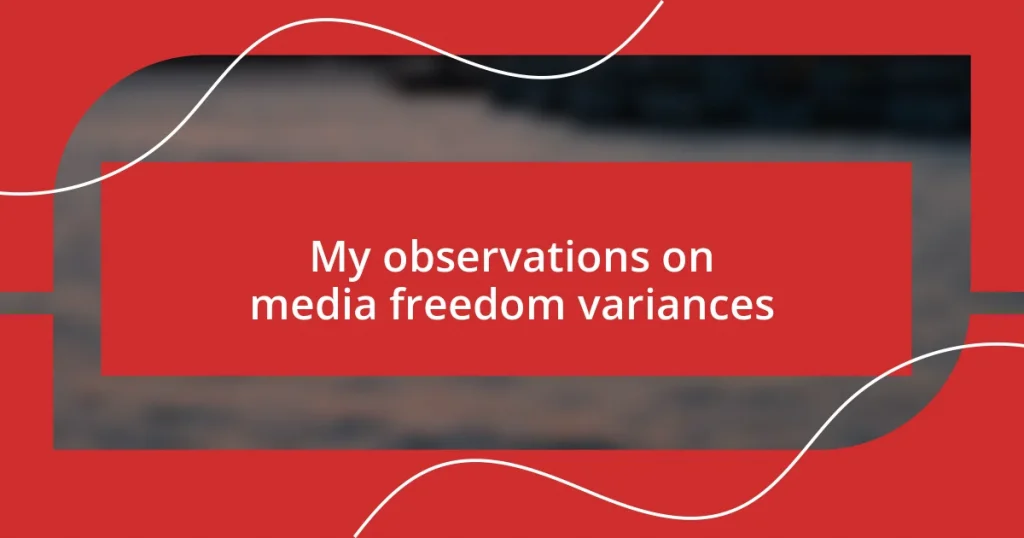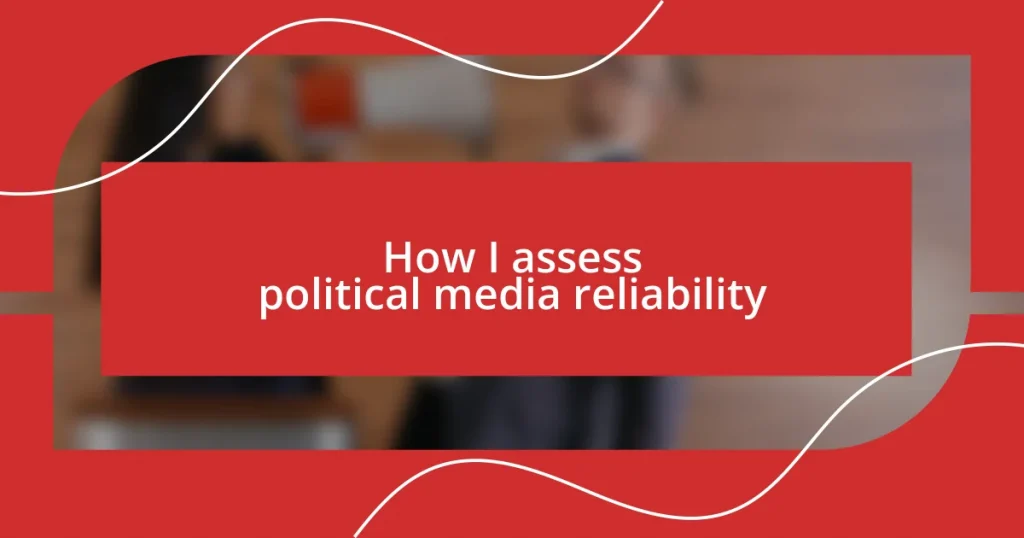Key takeaways:
- Political narratives shape beliefs and actions, driven by emotional weight and cultural context, influencing community values and perceptions.
- Factors such as historical context, collective trauma, and communication styles significantly affect how narratives are constructed and perceived across cultures.
- Utilizing diverse methods like thematic analysis, case studies, and dialogues enhances understanding of political narratives and their emotional undercurrents across different cultural frameworks.
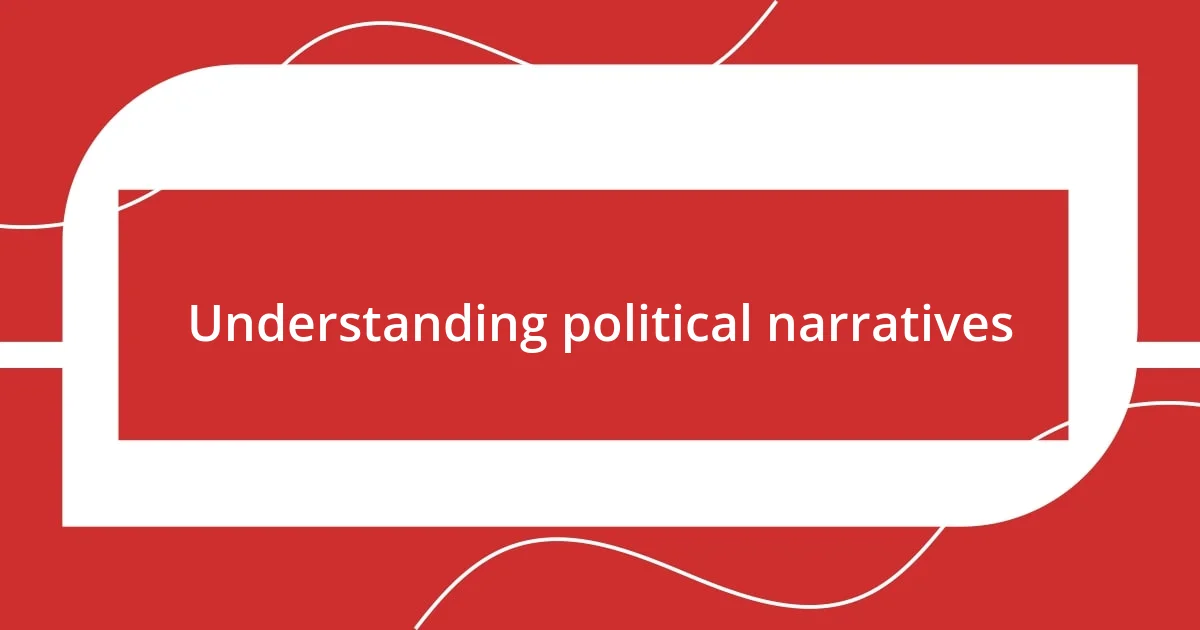
Understanding political narratives
Understanding political narratives requires looking beyond the facts and statistics; it’s about how stories shape our beliefs and actions. I remember a time when I attended a local town hall meeting and was struck by how different presenters framed the same issue. One framed it as a crisis needing urgent attention, while another positioned it as an opportunity for growth – the emotional weight of those narratives was palpable.
Every culture has its unique lens through which it interprets political events. From my travels, I’ve noticed that political narratives often reflect historical experiences, like in regions with strong communal ties, where stories of struggle resonate deeply. Have you ever considered how your own background influences your perception of political issues? It’s fascinating to ponder how these narratives can evict intense feelings of pride or resentment, even among people who seem worlds apart.
Ultimately, these narratives do more than inform; they can unite or divide us. I recall a community gathering where debates grew heated; it became evident that personal stories fueled these narratives. This made me realize that understanding political narratives is less about winning arguments and more about connecting with shared values and emotions. How do the stories we tell shape the political landscape in your community?
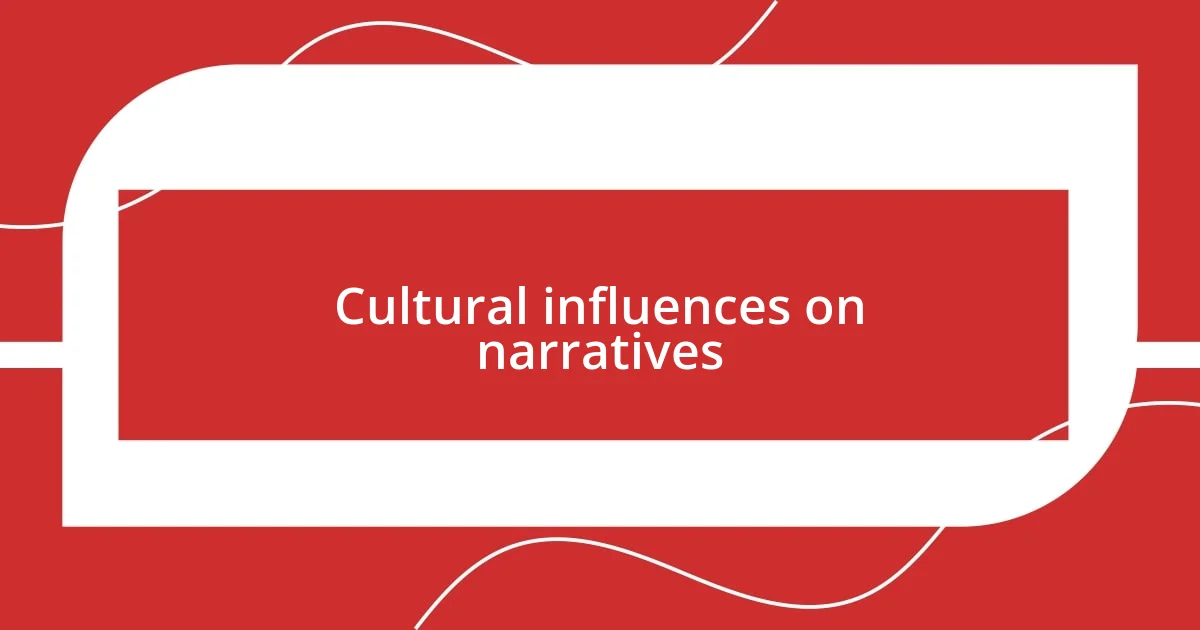
Cultural influences on narratives
Cultural narratives are deeply rooted in the shared histories and experiences that bind people together. I remember a vibrant discussion I had with friends from different backgrounds, where we unraveled how our respective cultures portrayed national heroes. While some viewed them as liberators, others saw them as oppressors. This highlights how narratives can vary widely, shaped by cultural context and collective memory.
Here’s a closer look at some key factors that influence how narratives are constructed across cultures:
- Historical Context: Events like wars or revolutions shape how societies view authority and resistance.
- Collective Trauma: Societies with histories of oppression or conflict often tell stories that reflect their struggles, affecting political discourse.
- Religious Beliefs: Religious narratives can frame moral discussions, guiding political ideologies in significant ways.
- Geographical Diversity: Different environments lead to varied perspectives, as local issues shape what matters most to communities.
- Communication Styles: Cultures that value individualism may prioritize personal narratives, while collectivist cultures often focus on community stories.
As I reflect on these aspects, it’s clear that understanding cultural influences on narratives not only enriches our perspectives but also invites a more empathetic engagement with diverse viewpoints.
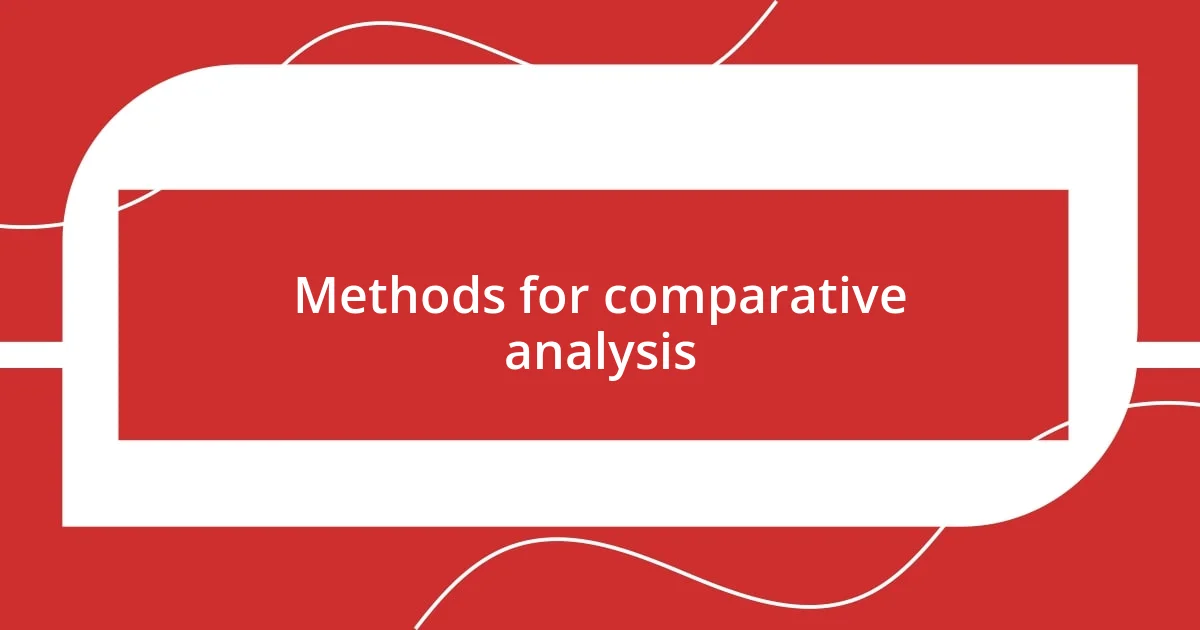
Methods for comparative analysis
When it comes to comparative analysis, I find that utilizing a multidimensional approach is essential. Once, while delving into political narratives across Latin America and Europe, I realized how context shapes interpretations. I employed methods such as content analysis, which involves examining textual materials to identify recurring themes. This technique allowed me to see how the same political concepts were framed differently, revealing the underlying cultural assumptions at play.
In addition to content analysis, I often use case studies to illustrate contrasting political narratives. I recall examining the Brexit campaign and the recent plebiscite in Chile. By studying these events side-by-side, I gained insights into how narratives mobilized populations in different cultural contexts. It became clear that the emotional appeals and tones varied significantly, reflecting distinct societal values. Keeping in mind these cultural nuances is crucial for a comprehensive understanding of political discourse.
Finally, I’ve found that interviews and surveys can provide rich qualitative data, allowing individuals to share their perspectives directly. This method reminded me of a dialogue I had with a group of young activists in Greece. Their passion and motivations highlighted the diverse interpretations of solidarity and resistance, which are fundamental to their political engagement. By incorporating these varied methods, one can paint a more nuanced picture of political narratives across cultures.
| Method | Description |
|---|---|
| Content Analysis | Examines texts to identify themes and patterns in political narratives. |
| Case Studies | Analyzes specific events to compare differing cultural responses to similar issues. |
| Interviews/Surveys | Gathers qualitative data on personal perspectives, enriching understanding of individual narratives. |
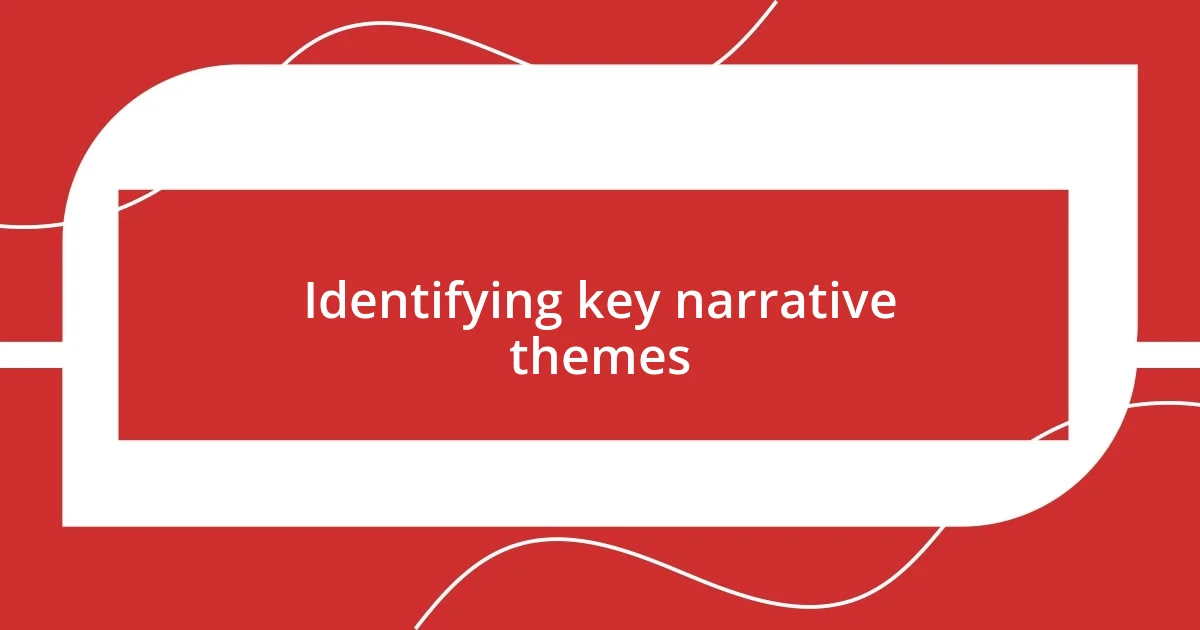
Identifying key narrative themes
Identifying key themes in political narratives often feels like peeling back layers of complex cultural identities. I remember a lively conversation after a film screening, where my friends and I debated how different countries portray leadership in their narratives. In some cultures, leaders are heralded as saviors, while in others, they are critiqued as tyrants. Isn’t it fascinating how these perceptions can shift depending on the stories we tell ourselves and our collective history?
Another theme that stands out for me is the role of conflicting interests in shaping narratives. During my travels in Eastern Europe, I encountered a variety of national stories that were often at odds with one another. These conflicting narratives reflected deep-seated historical grievances and aspirations for the future, leaving me to wonder: how can societies bridge these divides? It struck me that recognizing these themes is crucial for promoting dialogue and understanding in politically charged environments.
I often find that personal narratives interwoven with broader themes can create a compelling tapestry of political discourse. In a workshop I facilitated, participants shared their own experiences related to community struggles, which highlighted not only their individual journeys but also common challenges they faced. This blend of personal and collective storytelling unveiled themes of resilience and hope, reminding me that behind each narrative lies a shared humanity. How can we, as listeners, appreciate the depth and richness of these themes in our political conversations?
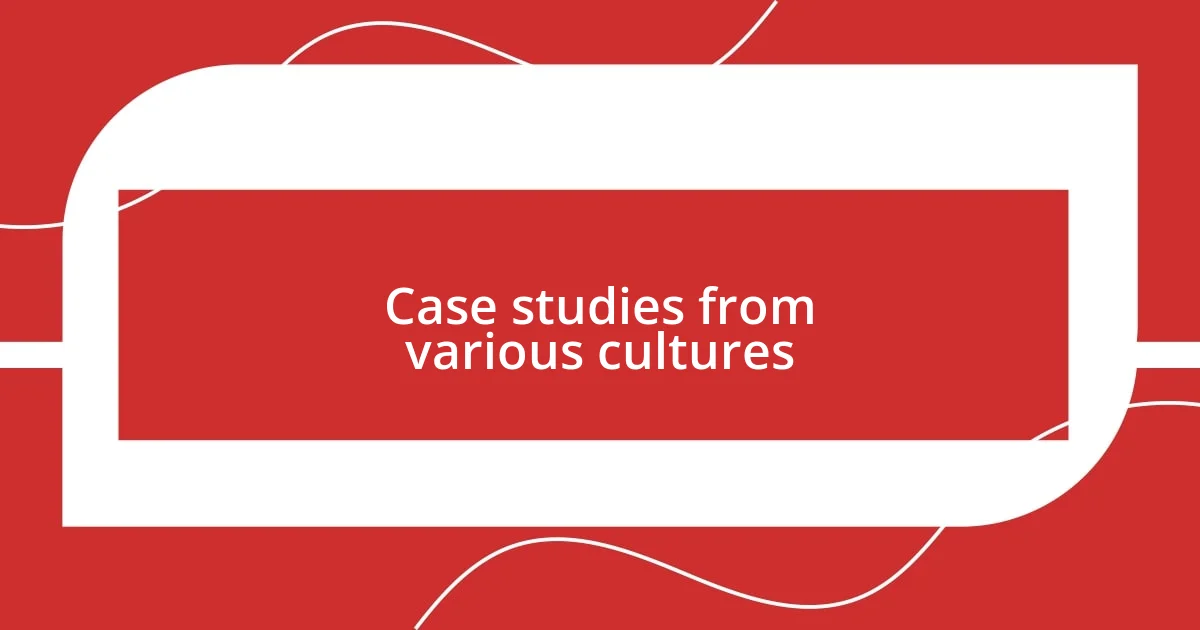
Case studies from various cultures
Exploring political narratives through specific case studies reveals just how deeply culture influences perspectives. One instance that stands out for me is the examination of the Black Lives Matter movement in the United States compared to Sweden’s approach to social justice. While BLM sparked widespread protests and discussions around systemic racism in a context of police violence, Sweden’s narrative centered on equality and integration within a welfare state framework. It’s interesting to see how these varying cultural backgrounds shape the public’s response and understanding of justice.
In another case, I vividly recall analyzing the political discourse surrounding the Arab Spring versus the Umbrella Movement in Hong Kong. The former was fueled by a collective desire for democracy and fundamental rights, while the latter focused on autonomy and preserving local identity. These distinct motivations reflected divergent cultural histories and societal values. It made me wonder, how do past experiences and societal frameworks shape the urgency of political movements?
I also remember my time studying the 2016 Philippines presidential election, where Rodrigo Duterte’s narrative of “change” captivated many. His controversial stance on crime resonated with a population tired of corruption, showcasing how emotions can be harnessed in political rhetoric. This stands in sharp contrast to Canada’s recent elections, where narratives of inclusivity and diversity are prioritized. It leads me to ask: how do we, as observers, discern the delicate balance between charisma and substance in these narratives across cultures?
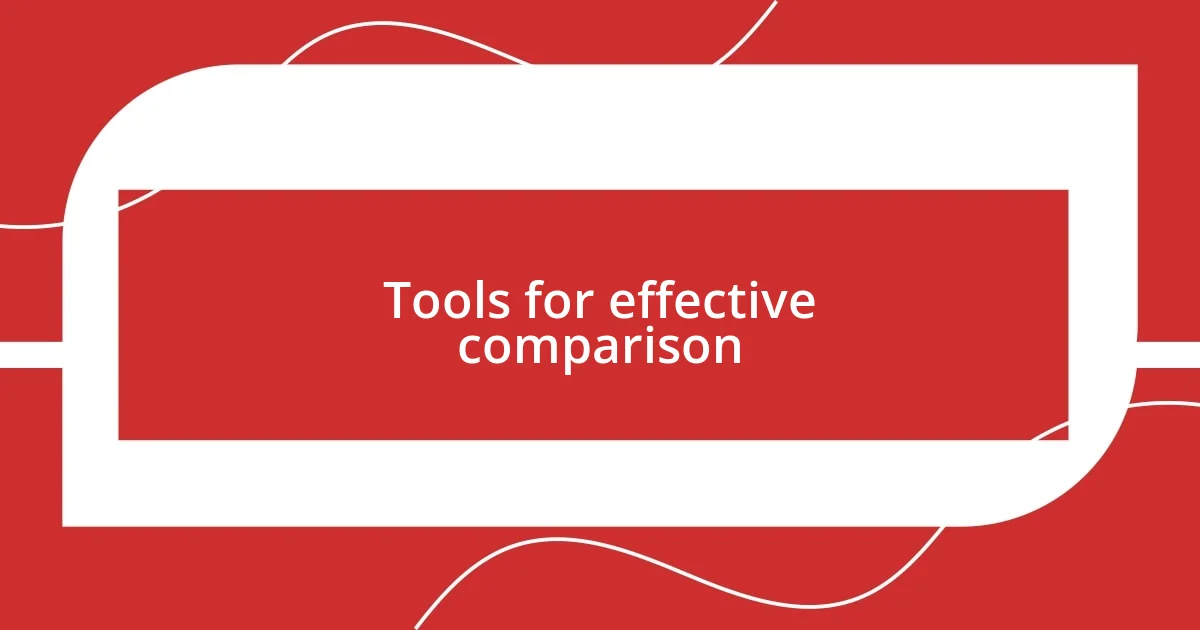
Tools for effective comparison
To effectively compare political narratives, I find that utilizing a multi-faceted approach is invaluable. One tool that stands out is thematic analysis. I remember conducting a workshop where we mapped out recurring motifs in various political speeches. It amazed me how themes like hope, fear, and identity emerged consistently across cultures, revealing underlying emotional currents that drive political engagement. Isn’t it fascinating how these themes can transcend geographical boundaries yet resonate differently depending on cultural context?
Moreover, leveraging comparative frameworks can enhance our understanding significantly. For instance, during my studies, I examined the role of symbolism in national narratives. Analyzing how different symbols—like flags or historical figures—carry unique meanings across cultures deepened my appreciation for their influence on political identity. Have you ever considered how a simple symbol can evoke pride or resentment based on collective experiences?
Lastly, I’ve found that engaging in dialogue with individuals from diverse backgrounds offers priceless insights. While attending a cultural exchange event, I listened to perspectives on leadership from people across the globe. Their stories illuminated how personal experiences shape one’s view of political authority, prompting me to think about my own biases. How often do we pause to reflect on how our narratives are crafted by personal encounters and societal values? It’s through these conversations that we can truly grasp the complexities of political narratives across cultures.
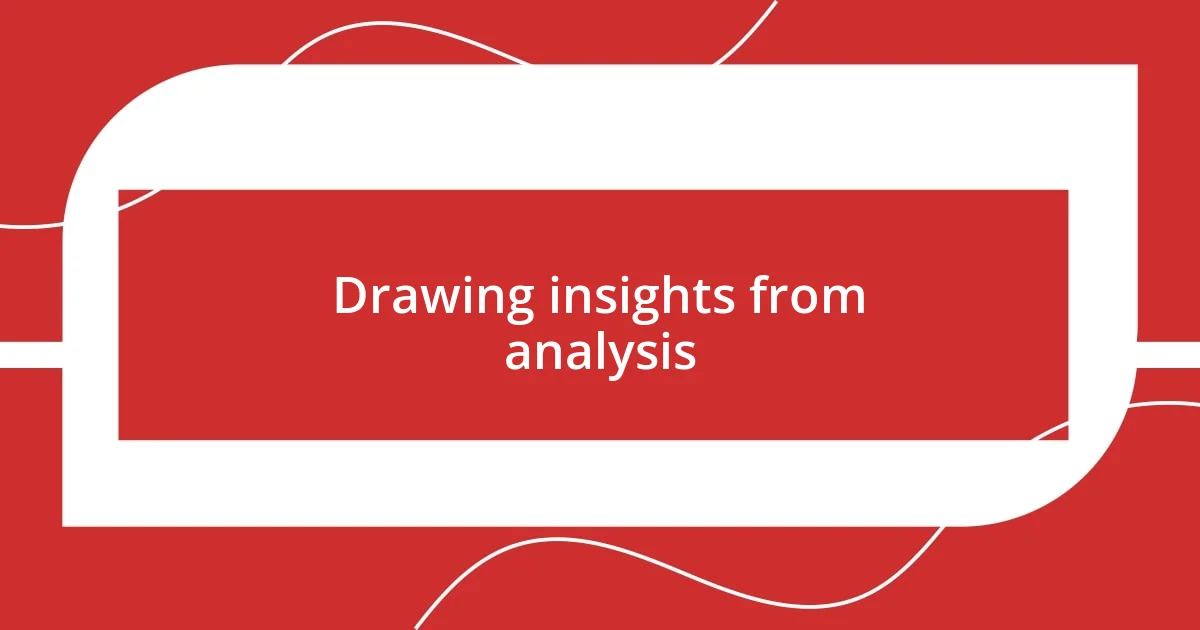
Drawing insights from analysis
When drawing insights from analysis, I find it crucial to reflect on the emotions that underlie political narratives. For instance, while studying protest movements around the world, I often felt a deep sense of connection to the individuals involved. Their passion and desperation opened my eyes to how personal experiences can shape collective movements. Have you ever experienced that connection? It makes you realize that behind every statistic, there’s a story that deserves to be heard.
Another realization I’ve had is the value of context in understanding narrative comparisons. I remember a project where we looked at gender representation in political discourse across various nations. I was struck by the stark differences in tone and focus. In some cultures, discussions were rooted in empowerment and agency, while in others, the narrative leaned towards preservation of traditional roles. This contrast made me ponder: how do values instilled in us from a young age influence our perception of such narratives?
I always emphasize the importance of adaptability in analysis. During one of my discussions, I encountered a difference in perspectives on national identity among international students. It was eye-opening to see how each person’s background colored their understanding of patriotism and belonging. This experience led me to wonder, how can we ensure that our analyses remain flexible and sensitive to these varied cultural lenses? It’s a reminder that insightful analysis isn’t just about comparing data; it involves an empathetic understanding of the narratives people live by.

